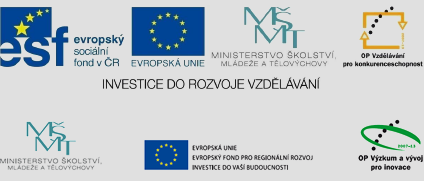What originally grew on the mountain slopes of the West Caucasus causes considerable problems in Europe. We are talking about the Heracleum mantegazzianum, which was brought to the continent as a decorative park plant in the 19th century. Since then, it has managed to infest large areas and since World War II, it has begun to spread uncontrollably in the Czech Republic. The cost of fighting the plant is considerable. For example, the Karlovy Vary region, which was the most infested by Heracleum in the country, invested over 80 million crowns in the fight against this dangerous weed in the years 2013 to 2015.
However, Heracleum is not the only invasive species on which experts led by Jana Müllerová from the Botanical Institute of the Academy of Sciences focus. These include, for example, the goldenrod from Canada, the ailanthus from China or the pterosaur from Japan. And scientists are using modern technology to fight plant invaders more effectively. Therefore, they joined forces with Petr Dvořák from the Institute of Aviation, Faculty of Mechanical Engineering, Brno University of Technology. "The goal of our first joint project was to develop a methodology for mapping four specific invasive species: Heracleum, Ailanthus, Pterosaur and Acacia. During the collaboration, we developed the first drone optimized specifically for this application. We are now continuing with a follow-up project: botanists have focused on other species that are more difficult to detect, and I am working to improve the aircraft so that the mapping provides even more accurate results,” Dvořák explains.
The new aircraft has a better multispectral camera and navigation system, and thus significantly greater spectral and spatial accuracy. It has several advantages over conventional manned aircraft photography. "In particular, it is more efficient and lower price. When the growing season of a plant occurs, botanists need to map the area immediately, they can't wait for a nationwide survey, which, moreover, is repeated only once every few years. Freely available satellite images such as Sentinel or Landsat are not detailed enough for small foci of invasion. And paying for commercial satellite imagery or a company that takes a few hectares of territory with an airplane is expensive. In addition, satellite and aerial photography are quite dependent on the weather, it flies thousands of meters above the ground and therefore there must be no clouds. Our drone flies a maximum of 120 meters above the ground and therefore below the clouds and is equipped with common commercial technology, so it is not expensive," Dvořák says, adding that shooting from a low altitude also means a better resolution of the resulting image.
Practical use is key
From the obtained data, Dvořák processes georeferenced orthomosaics, i.e. aerial maps with precise coordinates. He then passes them on to colleagues from the Institute of Botany of the Academy of Sciences of the Czech Republic, who use classification algorithms for them in order to recognize individual plant species. These include machine learning algorithms that make it easier to work with very detailed data from unmanned aerial vehicles. "As part of both mentioned projects, we have already prepared procedures for five invasive species and we are also studying the invasion in long-term monitored areas, such as the Bečva River since 2014. We cooperate with the Nature and Landscape Protection Agency, the Ministry of the Environment and national park administrations as well as with other landscape administrators, such as the Karlovy Vary Region,“ Jana Müllerová, the main researcher of the project from the Botanical Institute of the Academy of Sciences of the Czech Republic, says.

Scientists regularly share the results and procedures of monitoring invasions using unmanned vehicles at seminars and professional conferences and publish them on the website invaznirostliny.cz, where they inform about news and outputs of joint research. These include a number of professional articles in peer-reviewed foreign journals, but also a detailed methodology aimed at Czech users. "The practical use of our results in the fight against plant invasions is very important for us," Müllerová emphasizes.
The use of unmanned technologies for mapping the earth's surface is relatively wide. "While in the Czech Republic the priority may be, for example, the elimination of Heracleum or the detection of bark beetles, elsewhere it may be, for example, the monitoring of gorillas in the forests. In fact, it is still the same discipline of using methods of remote sensing of the earth from low altitudes," Dvořák explains. "The fact that the technology is interesting is also evidenced by the large European project in which we participate, which deals with the use of unmanned technologies for the environment," Müllerová adds.











